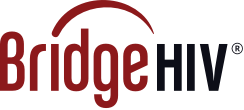
This is CRUSH: the first full-time, youth-based sexual health clinic in the East Bay.
According to the Centers for Disease Control and Prevention (CDC), young people aged 13-24 account for approximately one in every four new HIV infections in the United States. We recently interviewed Jonathan Van Nuys, RN MS NP from the CRUSH program at the East Bay AIDS Center (EBAC) to talk about the HIV epidemic in the youth population and what the CRUSH program is doing to support the health needs of youth in the East Bay.
What is CRUSH?
CRUSH (Connecting Resources for Urban Sexual Health) is the first full-time, youth-based sexual health clinic in the East Bay. It is part of the East Bay AIDS Center (EBAC) and is modeled after their Downtown Youth Clinic. That model, however, is geared towards youth living with HIV, whereas CRUSH is the first to serve young (18-29 years old) men of color living with or without HIV. It is known as a “clinic with connections,” where walk-ins and same day appointments are welcome and clients may easily connect with their case managers and providers by phone.
The CRUSH team works to remove barriers that may normally prevent clients from seeking life-saving medical services. For example, since some clients living with HIV need insurance or support programs to receive primary medical care, HIV specialty care, and case management, CRUSH staff will help underinsured/uninsured clients identify and enroll into such programs as appropriate. Moreover, clients benefit from “warm referrals” or direct linkage to care, which can make the process much more convenient and comfortable.
In addition to improving sexual health services for young men of color living in the East Bay, the CRUSH program will discover how this group prefers their services delivered. This information will be shared with providers who wish to learn best practices for engaging and keeping East Bay youth involved in their sexual health care. As part of this initiative, CRUSH is conducting a PrEP demonstration project and is offering PEP for those with a possible recent exposure to HIV. To access PrEP through CRUSH, one must sign an informed consent to enroll into their research study, where it will then be provided regardless of insurance status or ability to pay.
Why is there a need for CRUSH?
Youth and communities of color are disproportionately affected by the HIV epidemic. Moreover, results from a recent study published in the Journal of the American Medical Association showed that half of young people with HIV present for care after their CD4 counts fall below 350 (i.e., once their immune systems are already weakened). These youth tend to have higher viral loads, which puts them at greater risk for HIV- and non-HIV-related illnesses and death, and makes them more susceptible to spreading HIV. Potential reasons for this disparity include fear of judgment or stigma, distrust of the medical profession, as well as lack of resources for STI (sexually transmitted infections) testing and linkage to care services. The space provided by CRUSH is supportive, non-judgmental, sex-positive, and educational. Coupled with a harm reduction approach, clients are encouraged to identify their own goals and how they plan to achieve them. In sum, CRUSH clients are empowered to manage their healthcare now and in the future.
More on Safe Spaces
Every CRUSH staff member has a passion for social justice. For Jonathan, specifically, he has been involved with the epidemic for years and is affected by it personally. Jonathan is passionate about reducing the stigma and shame associated with HIV and STD’s, and stigma around sexual health in general. Providing a safe space, without fear or shame-based messaging, is important to him and to the rest of the CRUSH team. In addition, the CRUSH team is diverse in many ways—reflecting the population it serves.
The CRUSH program receives guidance from their Community Advisory Board (CAB) regarding best practices with the target population (i.e., young men of color ages 18-29), including how to provide culturally appropriate services. CRUSH also collaborates with community partners such as RISE, HIV Education and Prevention Project of Alameda County (HEPPAC), and Asian Health Services to gather resources for its clients. By working with the CAB and other community partners, CRUSH is better able to meet the needs and values of the community for which they serve. To illuminate how the CAB functions, here is one example of the “8 Unifying Principles” they developed to guide the work of the CRUSH program: We believe that people living with HIV/AIDS have a right to quality, affordable, timely, empowering, client-centered health care. We also believe that people living with HIV/AIDS have a right to make informed choices regarding the mode and manner of their treatment. Clearly, the CRUSH team follows a set of core values that promote the overall well-being of the population it serves.
References:
http://www.CDC.gov/hiv/risk/age/youth
AL Agwu, et al. CD4 Counts of Nonperinatally HIV-infected Youth and Young Adults Presenting for HIV Care Between 2002 and 2010. JAMA Pediatrics. February 3, 2014.
August 2014



